The Crest system
Table of contents
All of Crest’s planets are documented on this page, as none of them have any moons. Their incredibly close proximity to Crest means their hill spheres are too small to hold onto any orbiting bodies. Due to how packed the system is with planets, it is also mostly devoid of rogue small bodies (asteroids).
`
Also, my N-Body simulation made a return here, this time simulating a whole protoplanetary disk, which was possible here due to the compact size of the system.
`
Stegnos
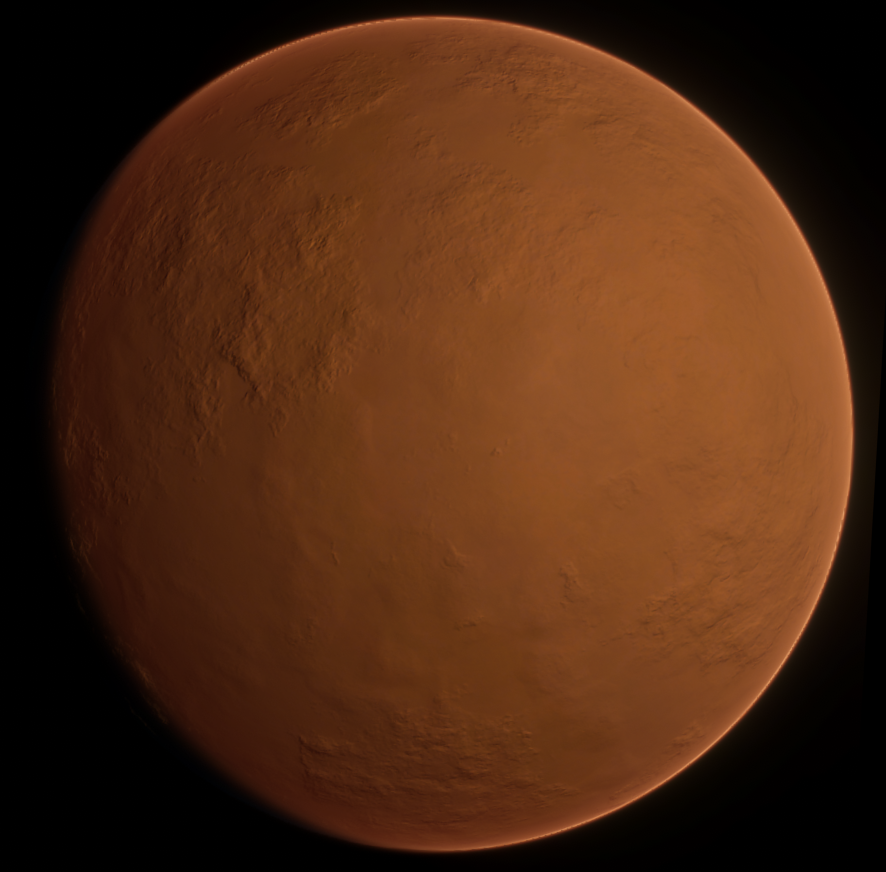
Stegnos as seen from space
Mass |
7.525e24 kg (1.26 M⊕) |
|---|---|
Radius |
6,855 km (1.07 R⊕) |
Gravity |
1.08 g |
Rotation period |
Tidally locked |
Semi-Major Axis |
0.031 AU |
|---|---|
Inclination |
0° |
Eccentricity |
0.033 |
Argument of Periapsis |
33.69° |
Period |
5 d, 6 h, 38 m |
Stegnos is the innermost planet of the Crest system, and as such, is extremely hot and inhospitable on the day side, though it does manage to hold on to a thin atmosphere despite the strong solar winds. This causes some heat to be circulated to the night side, which is comfortably warm as a result, though the air itself is still toxic due to consisting entirely out of CO². The planet actually has water on its surface, though it is frozen in a permanent glacier on the night side.
Minosi
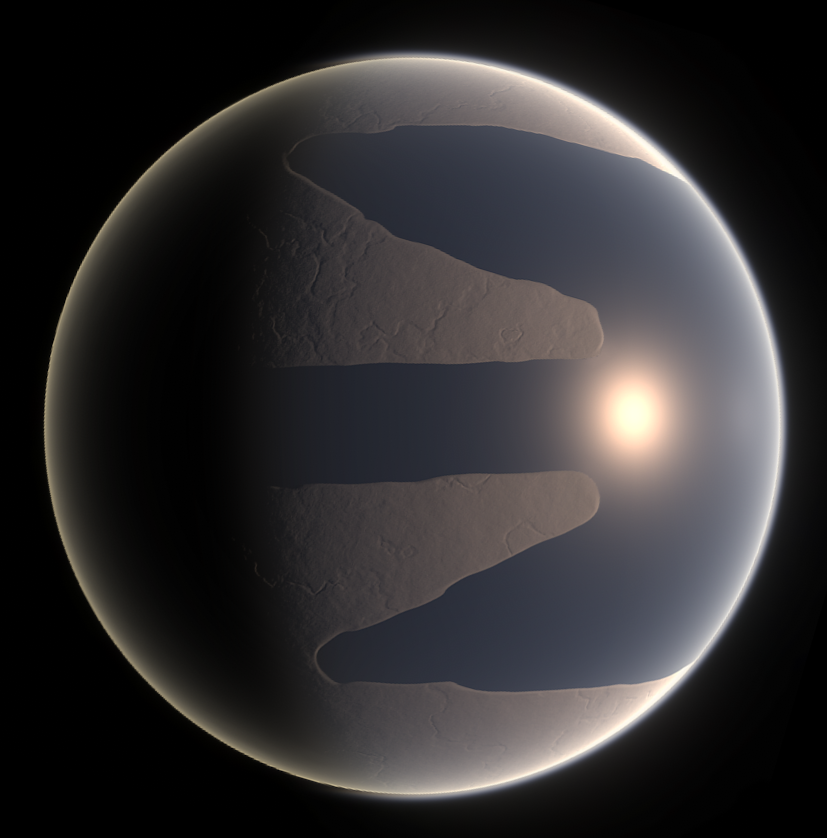
Minosi as seen from space
Mass |
5.091e24 kg (0.85 M⊕) |
|---|---|
Radius |
6,202 km (0.97 R⊕) |
Gravity |
0.9 g |
Rotation period |
Tidally locked |
Semi-Major Axis |
0.037 AU |
|---|---|
Inclination |
0° |
Eccentricity |
0.0474 |
Argument of Periapsis |
291.27° |
Period |
6 d, 20 h, 29 m |
Minosi is a planet with a surface consisting entirely of water in either liquid or solid form, and a decently thick atmosphere. Both of these help with heat circulation in the form of both wind and ocean currents. As a result, the ocean actually wraps all the way around the planet in a thin ring on the night side. Temperatures are quite habitable on the night side, though staying on the day side would be ill-advised, as it regularly reaches 100°C on the substellar point, and the entire surface is regularly blasted with highly radioactive solar winds. However, its particularly strong electromagnetic field means its surface is relatively well protected from flares and solar winds.
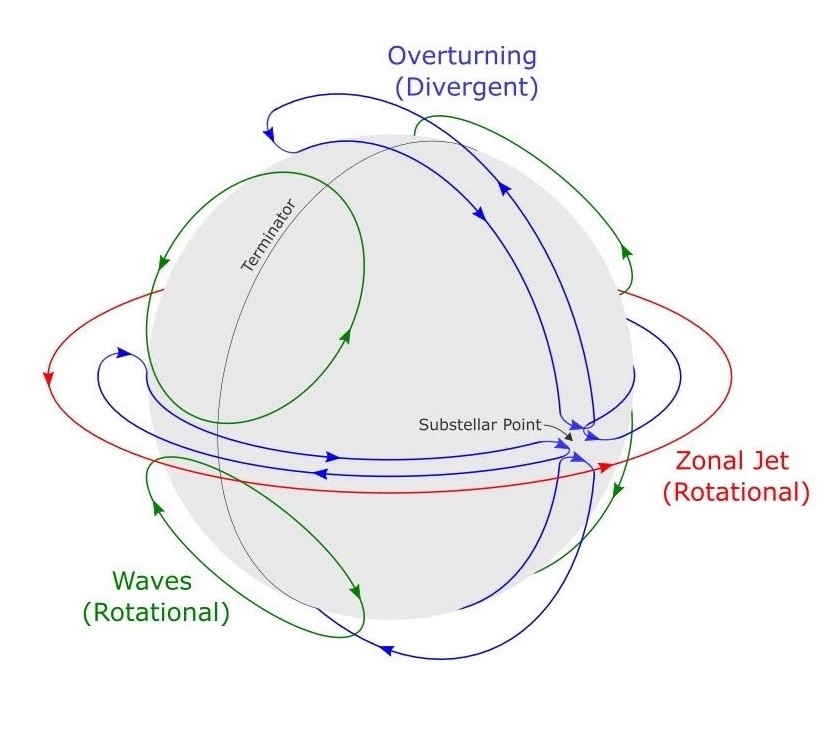
Wind patterns on Minosi
Iris

Iris as seen from space
Mass |
6.054e24 kg (1.01 M⊕) |
|---|---|
Radius |
6,348 km (0.99 R⊕) |
Gravity |
1.02 g |
Rotation period |
Tidally locked |
Semi-Major Axis |
0.045 AU |
|---|---|
Inclination |
0° |
Eccentricity |
0.0184 |
Argument of Periapsis |
88.206° |
Period |
9 d, 6 h, 17 m |
Similar to Minosi, Iris’ surface also consists entirely of water, though most of it is frozen due to the planet’s greater distance from Crest. Only a roughly circular area centered on the substellar point has liquid water. Its atmosphere mostly consists of Nitrogen, and temperatures quickly become freezing nearing the daylight terminator or poles.

A shore on Iris
Ghulka
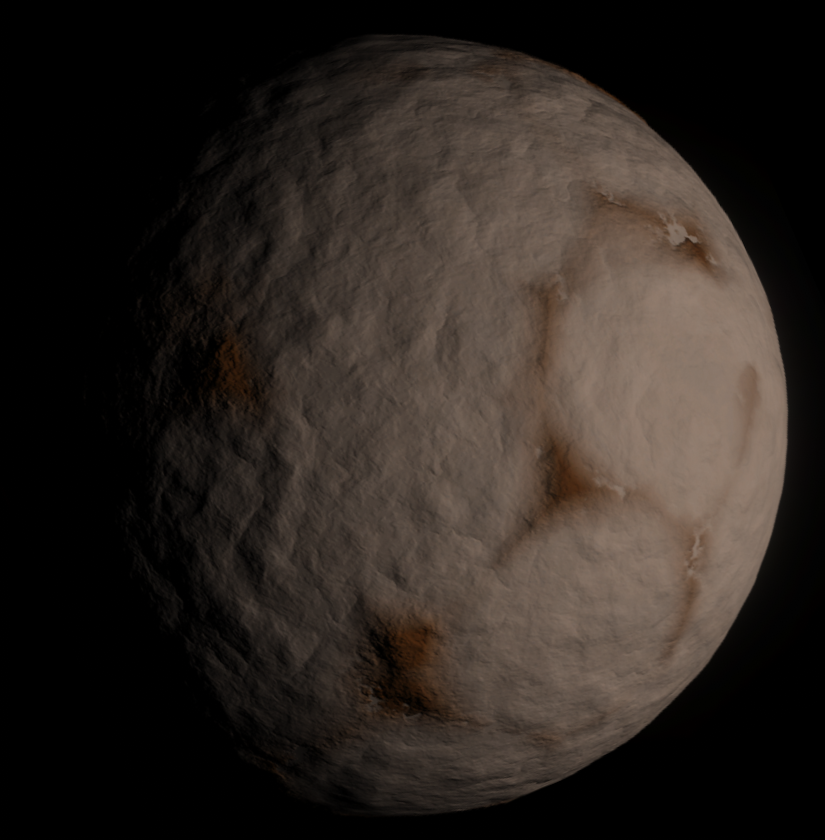
Ghulka as seen from space
Mass |
1.14e24kg kg (0.19 M⊕) |
|---|---|
Radius |
3,652 km (0.57 R⊕) |
Gravity |
0.58 g |
Rotation period |
Tidally locked |
Semi-Major Axis |
0.055 AU |
|---|---|
Inclination |
0° |
Eccentricity |
0.07 |
Argument of Periapsis |
274.37° |
Period |
12 d, 10 h, 12 m |
Ghulka’s surface is almost entirely covered in water ice, though it is only a thin layer, with tall mountain peaks breaking through it. It is the first of Crest’s planets to have no atmosphere. A couple of unusually flat valleys are scattered on Ghulka, which implies the past presence of small liquid water oceans.
Grint
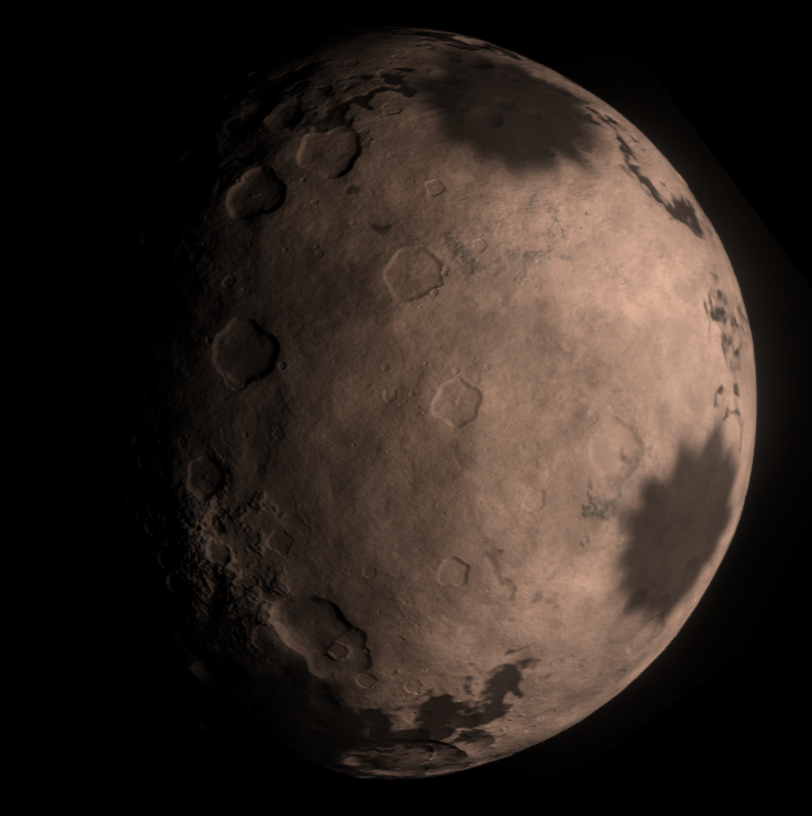
Grint as seen from space
Mass |
4.985e22 kg (0.008 M⊕) |
|---|---|
Radius |
1,292 km (0.2 R⊕) |
Gravity |
0.2 g |
Rotation period |
Tidally locked |
Semi-Major Axis |
0.068 AU |
|---|---|
Inclination |
1.6° |
Longitude of Ascending Node |
22.7° |
Eccentricity |
0.063 |
Argument of Periapsis |
307.06° |
Period |
17 d, 2 h, 52 m |
Grint is the final planet of the Crest system, though its size and mass are less than even Ralu’s. Its surface also does not contain any water anywhere, unlike the rest of the planets.
Sham
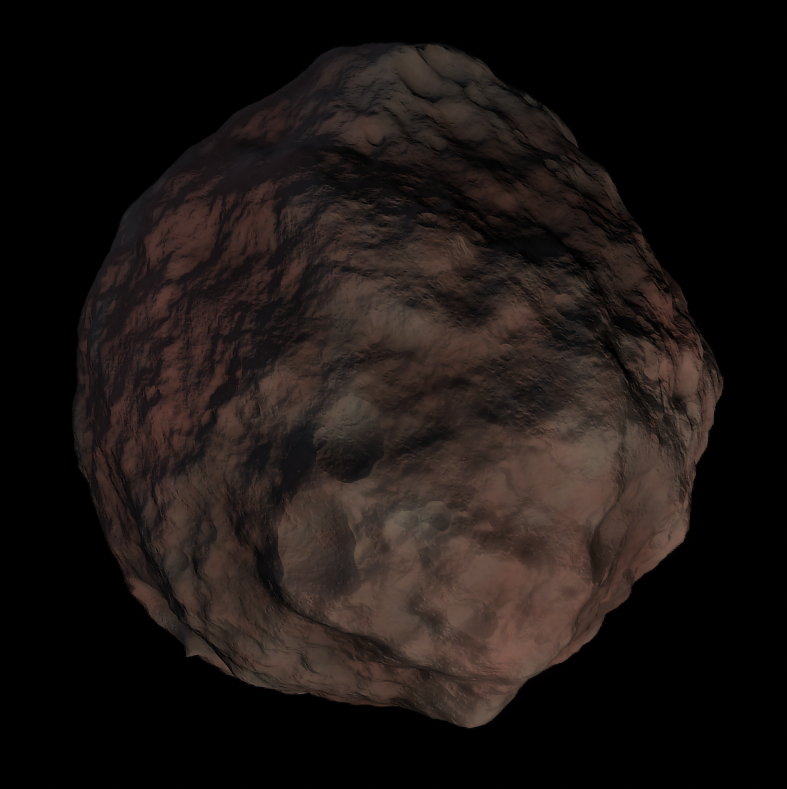
Sham as seen from space
Mass |
8.556e17 kg |
|---|---|
Radius |
16.414 km |
Gravity |
0.021 g |
Rotation period |
32 h, 16 m, 3 s |
Semi-Major Axis |
0.069 AU |
|---|---|
Inclination |
-11.8° |
Longitude of Ascending Node |
31.2° |
Eccentricity |
0.07 |
Argument of Periapsis |
319.89° |
Period |
17 d, 16 h, 23 m |
Sham is a particularly large and dense asteroid orbiting only a bit farther out then Grint. Its one of only few asteroids in the system, as red dwarf systems usually do not contain many due to how tightly packed they are with planets, leaving no room for minor bodies farther in, and Solakku’s gravitational pull tugging at things further out.